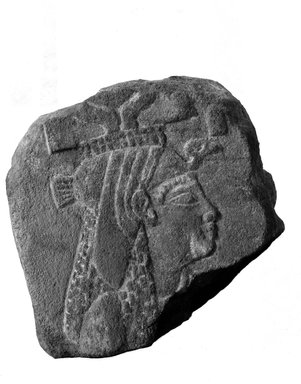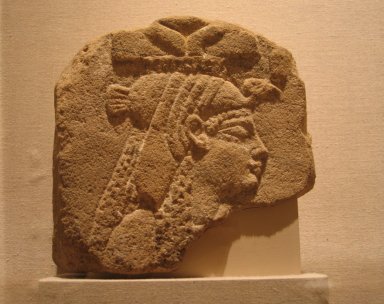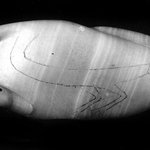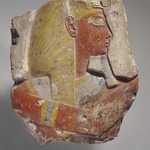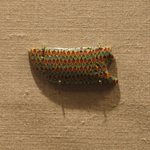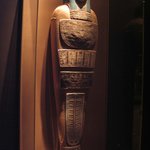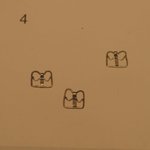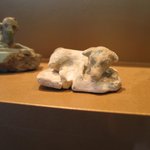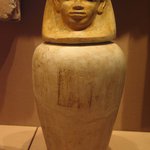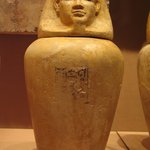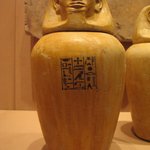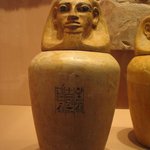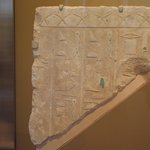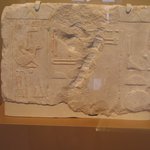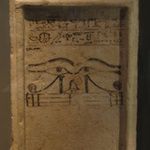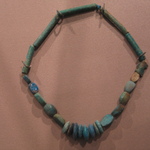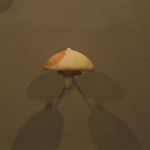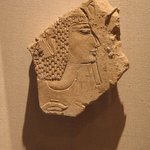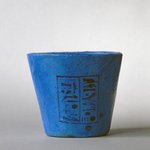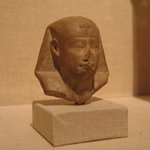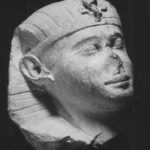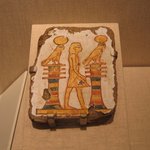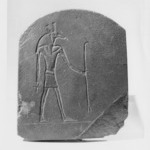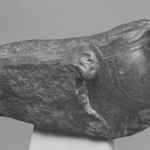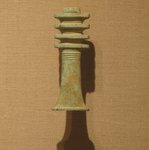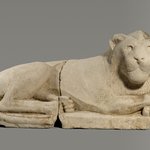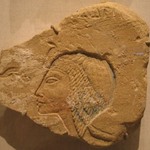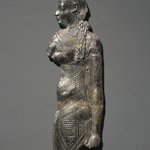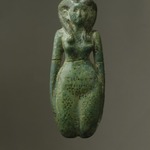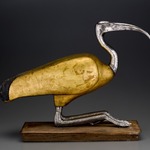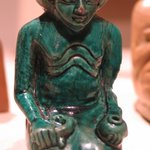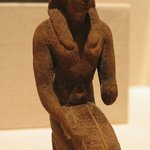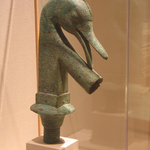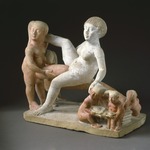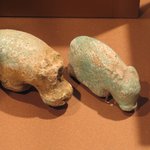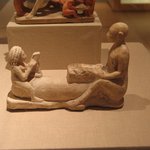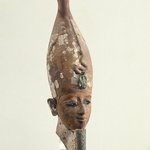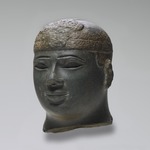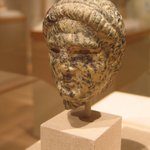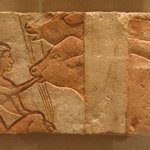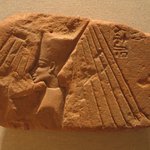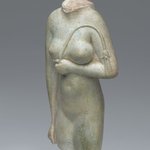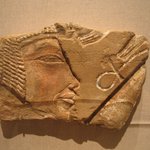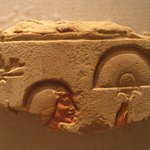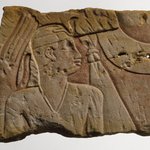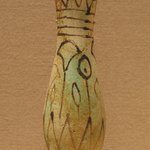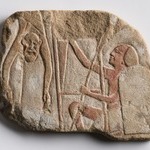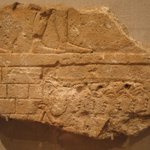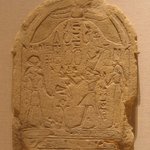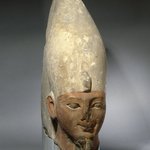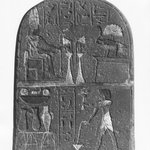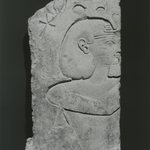Representation of a Queen or Goddess
Egyptian, Classical, Ancient Near Eastern Art
On View: 19th Dynasty to Roman Period, Martha A. and Robert S. Rubin Gallery, 3rd Floor
Although both queens and goddesses were often represented in the Ptolemaic Period with elaborate headdresses consisting of a vulture surmounted by cow's horns and a sun disk, the smaller of these two females is clearly labeled as the goddess Isis by a hieroglyph above the orb of the sun. The identity of the woman on the larger fragment is uncertain. Both works feature the style characteristic of Ptolemaic art: fleshy cheeks and especially the bullet-shaped breast and luxuriant belly and thighs on the smaller piece. Although the latter work may have been a sculptor's trial piece, as suggested by the grid pattern on the rectangle at the upper right, the hole at the top indicates that it may have been reused as a temple offering.
MEDIUM
Sandstone, pigment
DATES
305–30 B.C.E.
PERIOD
Ptolemaic Period
DIMENSIONS
7 5/8 x 7 3/8 x 4 5/16 in. (19.3 x 18.8 x 10.9 cm)
(show scale)
ACCESSION NUMBER
37.1488E
CREDIT LINE
Charles Edwin Wilbour Fund
CATALOGUE DESCRIPTION
Fragment of a sandstone relief from the Philae Temple. The fragment shows the head of a goddess wearing a nekhbet headdress over a striated tripartite wig. The bottom part of the double-plumed crown (swty) is evident at the top of the fragment. The fragment shows her cut in raised relief though she is certainly positioned in a larger scene cut in sunk relief.
Condition: The fragment is in excellent condition. There are several horizontal black streaks on the upper part and there are white plaster incrustations in some of the incised lines on the figure.
CAPTION
Representation of a Queen or Goddess, 305–30 B.C.E. Sandstone, pigment, 7 5/8 x 7 3/8 x 4 5/16 in. (19.3 x 18.8 x 10.9 cm). Brooklyn Museum, Charles Edwin Wilbour Fund, 37.1488E. Creative Commons-BY (Photo: Brooklyn Museum, 37.1488E_NegA_glass_bw_SL4.jpg)
IMAGE
overall, 37.1488E_NegA_glass_bw_SL4.jpg. Brooklyn Museum photograph
"CUR" at the beginning of an image file name means that the image was created by a curatorial staff member. These study images may be digital point-and-shoot photographs, when we don\'t yet have high-quality studio photography, or they may be scans of older negatives, slides, or photographic prints, providing historical documentation of the object.
RIGHTS STATEMENT
Creative Commons-BY
You may download and use Brooklyn Museum images of this three-dimensional work in accordance with a
Creative Commons license. Fair use, as understood under the United States Copyright Act, may also apply.
Please include caption information from this page and credit the Brooklyn Museum. If you need a high resolution file, please fill out our online
application form (charges apply).
For further information about copyright, we recommend resources at the
United States Library of Congress,
Cornell University,
Copyright and Cultural Institutions: Guidelines for U.S. Libraries, Archives, and Museums, and
Copyright Watch.
For more information about the Museum's rights project, including how rights types are assigned, please see our
blog posts on copyright.
If you have any information regarding this work and rights to it, please contact
copyright@brooklynmuseum.org.
RECORD COMPLETENESS
Not every record you will find here is complete. More information is available for some works than for others, and some entries have been updated more recently. Records are frequently reviewed and revised, and
we welcome any additional information you might have.
